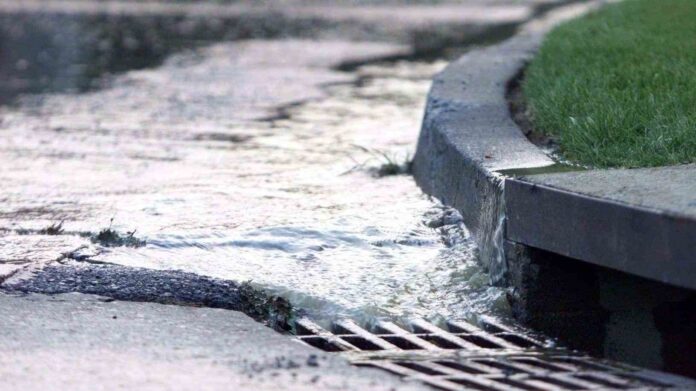Explore how urbanization impacts stormwater and discover innovative solutions for sustainable city planning and water management.
Urbanization is transforming our landscapes, shaping cities into bustling hubs. But with this growth comes a hidden challenge—stormwater management. In this blog post, we explore how urbanization affects stormwater and what solutions can help us manage this growing issue.
What Exactly is Stormwater?
Stormwater is rainwater or melted snow that doesn’t soak into the ground, instead flowing over surfaces. In natural settings, much of it seeps into the soil, replenishing groundwater. However, in urban areas, impervious surfaces like roads and buildings prevent absorption, leading to runoff.
This shift means cities must handle significantly more water. Stormwater can overwhelm systems, causing flooding and pollution. Understanding how urbanization affects stormwater is crucial for developing effective management strategies.
Urbanization’s Impact on Stormwater
Urbanization affects stormwater in several ways. Firstly, it alters natural landscapes, replacing green spaces with concrete. This change increases impervious surfaces, reducing water infiltration.
Secondly, increased runoff leads to higher volumes of water entering drainage systems. These systems often struggle to cope, resulting in overflow. This can cause flooding and strain local infrastructure.
Finally, stormwater can carry pollutants into water bodies. Runoff from roads and industrial areas can contain oil, chemicals, and debris. This pollution harms aquatic ecosystems and affects water quality.
The Role of Impervious Surfaces
Impervious surfaces are central to urban stormwater challenges. Roads, parking lots, and rooftops prevent water from soaking into the ground. This leads to more runoff and less natural absorption.
In cities, the percentage of impervious surfaces can be significant. For example, some urban areas consist of over 70% impervious materials. This high percentage means more stormwater and increased potential for flooding.
To tackle these issues, cities are exploring ways to reduce impervious surfaces. Green roofs, permeable pavements, and rain gardens are innovative solutions that allow water to infiltrate the ground, decreasing runoff.
Consequences of Increased Runoff
Increased stormwater runoff has several implications. Firstly, it can lead to flooding, damaging properties and infrastructure. Cities may face expensive repairs and water damage remediation in Orem, UT.
Secondly, runoff can erode landscapes, altering riverbanks and causing sediment buildup. This affects natural habitats and increases the need for dredging and maintenance.
Finally, increased runoff can overwhelm water treatment facilities. Excess water may not receive adequate treatment, leading to pollution in rivers and lakes. This poses risks to public health and the environment.
Pollution in Urban Runoff
Pollution is a significant concern with urban stormwater. Runoff can carry various pollutants from roads and industrial sites. These include oils, heavy metals, and chemicals hazardous to ecosystems.
Pollutants can accumulate in water bodies, impacting aquatic life. Fish and plants may suffer from toxic exposure, disrupting food chains. Additionally, polluted water can contaminate drinking supplies, posing health risks.
Effective stormwater management involves reducing pollution sources. Cities are implementing measures like street sweeping and installing filters in drainage systems to minimize pollutants in runoff.
Innovative Stormwater Management Solutions
Cities are developing innovative solutions to manage stormwater effectively. Green infrastructure is a key focus, incorporating natural elements into urban design.
Green roofs, for instance, use plants to absorb rainwater, reducing runoff. They also provide insulation, improving energy efficiency in buildings. Similarly, permeable pavements allow water to seep through surfaces, decreasing surface runoff.
Rain gardens and bioswales capture stormwater, filtering pollutants naturally. These features enhance urban aesthetics and promote biodiversity. Implementing such solutions can significantly improve stormwater management.
The Importance of Public Awareness
Public awareness plays a vital role in stormwater management. Educating communities about stormwater’s impact and sustainable practices encourages responsible behavior.
Citizens can contribute by reducing impervious surfaces on their properties. Installing rain barrels and planting trees help capture rainwater, decreasing runoff. Proper disposal of chemicals and waste prevents pollutants from entering drainage systems.
Collaborative efforts between communities and local governments foster effective stormwater management. Engaged citizens support initiatives, ensuring sustainable urban development.
The Role of Policy and Regulation
Effective stormwater management requires robust policies and regulations. Governments must establish guidelines for development projects, promoting sustainable practices.
Regulations can mandate green infrastructure in new constructions. Requiring permeable surfaces and proper drainage systems reduces runoff. Incentives for green roofs and rainwater harvesting encourage eco-friendly building.
Policy enforcement ensures compliance, holding developers accountable. Strict regulations protect water quality and minimize flooding risks, safeguarding communities.
Challenges in Implementing Solutions
While promising, stormwater solutions face challenges. Funding constraints limit the scope of projects, delaying implementation. Maintenance costs can strain municipal budgets.
Additionally, retrofitting existing infrastructure for green solutions is complex. Older cities may struggle with adapting, requiring innovative approaches.
Public resistance can also hinder progress. Misunderstandings about the benefits of green infrastructure may lead to reluctance in adoption. Overcoming these barriers requires collaboration and communication.
The Future of Stormwater Management
The future of stormwater management lies in innovation and collaboration. Technological advancements offer new tools for monitoring and managing stormwater.
Smart sensors can track weather patterns and predict stormwater volumes. Real-time data helps optimize drainage systems, preventing overflow. Integrated management systems streamline operations.
Collaboration between governments, communities, and industries fosters comprehensive solutions. By working together, stakeholders can create resilient urban environments that withstand the challenges of stormwater.
Conclusion
Urbanization presents challenges for stormwater management, but it also offers opportunities for innovation. By understanding the impacts of urbanization and implementing sustainable solutions, cities can mitigate flooding risks and protect water quality.
Individuals, communities, and policymakers all have roles to play. Together, we can create urban spaces that harmonize with nature, ensuring a sustainable future for generations to come.
Explore more about stormwater management strategies and how you can contribute to a sustainable environment. Stay informed and engaged in shaping the cities of tomorrow.

